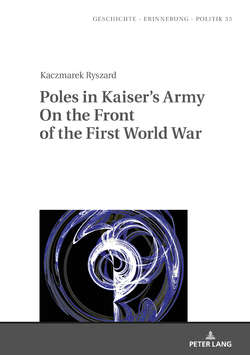Читать книгу Poles in Kaisers Army On the Front of the First World War - Ryszard Kaczmarek - Страница 20
На сайте Литреса книга снята с продажи.
Cutry
ОглавлениеOther regiments also underwent their baptism of fire, although, it was not always as bloody as under Rossignol. In all cases, it happened in the third decade of August, 1914.
Moving to the fortress of Longwy, the 22nd Infantry Regiment came under artillery fire behind Niederkorn (near Esch). It was the first time that the soldiers could witness the consequences of field artillery shrapnel and light bullets assault. The troop did not suffer any losses. Everything was like during the maneuvers. When the fire stopped, the local civilians treated the soldiers to milk and buns.217 At the beginning of the war, the fear of shrapnel fire was very high because they wreaked havoc among the infantry and the cavalry in the nineteenth century. Cartridges, usually filled with more than 200 leaden bullets, usually exploded in the middle of a column or in front of an assaulting infantry.218 Kazimierz Wallis describes his first encounter with such a weapon as a dramatic experience:
At 5 am, there began shrapnel fire from both sides. The shrapnel exploded at our left, behind nearby trenches. The shrapnel are something terrible when you see it for the first time. Only slowly can you get used to it. Way off in the distance, you see a flash of the shot, then a few seconds of silence. Soon, you can hear a hum and whizz of approaching shrapnel. After that, they explode with a bang louder than the sound of any powerful grenade heard from close distance, and then thousands of iron fragments spray in every direction. You see a fireball, how it blows out with a crash, particularly in the darkness. If a shrapnel explodes right above the ground, then an entire cloud of soil and stones rises above the ground. Yesterday, we sat in dugouts during the fire. Only after each shot could we check to see the effects of each shot. In a half an hour, the shrapnel fire stopped.219
After the transition to trench warfare, the effectiveness of such ammunition considerably decreased. Shrapnel were only effective in open field combat.
On August 21, the German soldiers finally crossed the French border near Hussigny. The village was already conquered, there was a German flag on the church tower. The effects of war were quite clear here: Hussigny was partly burned and ruined while few civilians, including women and children, stood frightened in front of the houses that were left. Here also occurred an attack that many associated with the French infiltrators, when someone fired the German dragoon cavalcade.220
←79 | 80→
For the 22nd Infantry Regiment, the baptism of fire happened during the clash near Cutry, on August 22–23. The unit’s task was to break the line between the fortress in Verdun and Longwy. The fortification was surrounded by the ring of villages conquered by Germans in the French department Meurthe-et-Moselle in Lorraine. After reaching the hills near Cutry, a regiment found itself under artillery fire that fell the first soldiers. Two companies of the Third Battalion turned into an extended line to the east of the village, in which the French shooters hid in houses, still perfectly visible due to their red trousers (“visible as poppy blossom”). A single machine gun fired from the church tower and ceased only after a gunshot exchange with the German machine gun company. Nevertheless, the German infantry assault collapsed; but after the arrival of the heavy artillery at the nearby hills, the German’s could shell the village and the church. It was then that there occurred a rare instance of a classic line infantry assault, unusually in this trench warfare:
They were so sure about their victory that they started an assault without waiting for the cover of their own artillery. With the bayonets, drums, and trumpeter’s command “Forward!”, they reached the burning village, totally oblivious to the fire of their cannons, as they ran screaming “Hooray!” They pushed the enemy out of Cutry after a short fight, also with civilian participants.221
At 3.30 pm, the French conducted a counterattack preceded with artillery fire. They completely destroyed two batteries of the German 11th Field Artillery Regiment on a hill. All horses and almost entire cannon service died. At 5 pm, shrapnel and artillery shots bombarded Cutry while the French attacked the western part of the village, abandoned by the Germans. The fights ceased in the evening.
